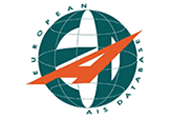
 | |
| [ APAC | AVITECH | EUROCONTROL | FREQUENTIS | ISO | MEKON | NEDGRAPHICS | SOLITEC ] |

The EAD system can be geographically divided into the following main parts: The server sites, the office sites, the clients (or client sites) and the networks. Additional sites are the Training Site and the Test & Development Site.
There will be two central server sites. This is necessary to secure redundancy in case of a major disaster. These server sites contain the EAD servers. For clients, it is totally transparent which site they are connected to.
The two server sites are connected through a Metropolitan Area Network (MAN). The MAN is used to mirror the data from one site to the other, and to connect the Local Area Network (LAN) from site 1 to the LAN of site 2.
There will also be two remote office sites for the EAD Staff. These office sites are connected to the server sites through the EAD Network.
The clients can be separated into Data Providers, Data Users, External Systems, AFTN Subscribers and Public Users. All Clients are connected to the EAD server sites: Data Providers, Data Users and External Systems through the EAD Network, AFTN Subscribers through the AFTN/CIDIN network and the Public Users through the Internet.
In summary, the following network connections exist to connect the various clients with the server sites:
- LANs to connect the HW inside the server and office sites,
- MAN between the two server sites,
- EAD Network (WAN, ISDN),
- AFTN/CIDIN network (to connect to the national Communication Centre),
- Internet.
The test equipment is separated from the operational EAD System in order to avoid any impact from training and test activities on the operational system. The training equipment provides facilities to train EAD Clients.
The EAD Operational Staff is located at the EAD Offices. Both EAD Offices are operational 24h. The definition of the work share is up to operational procedures.
A main overview of the EAD System is shown in Figure 1
EAD Overview

